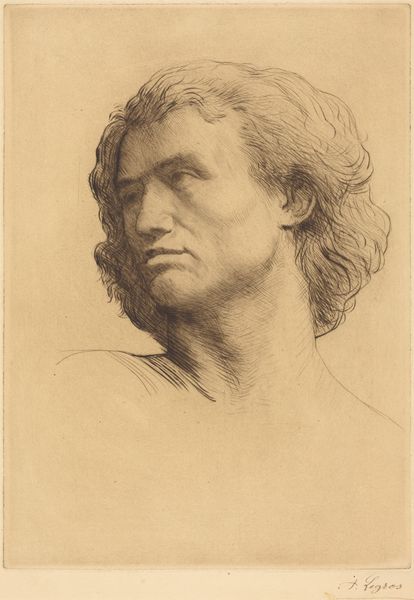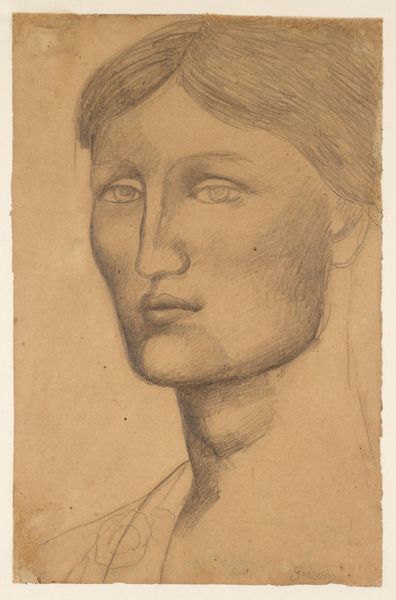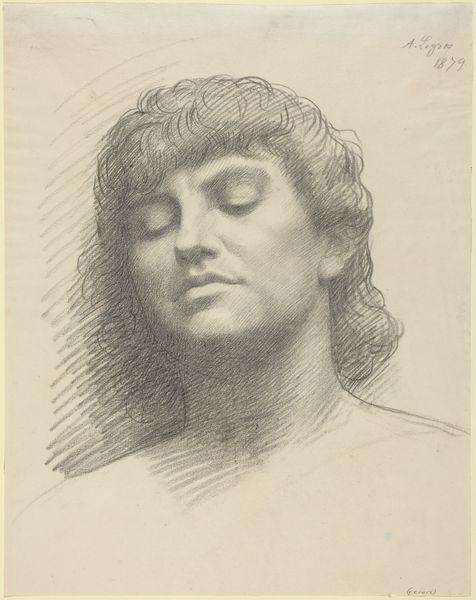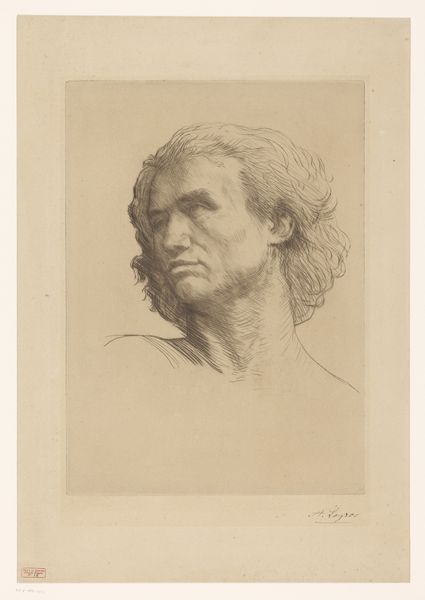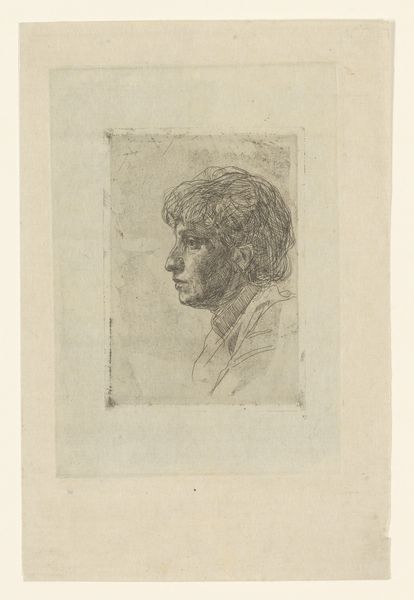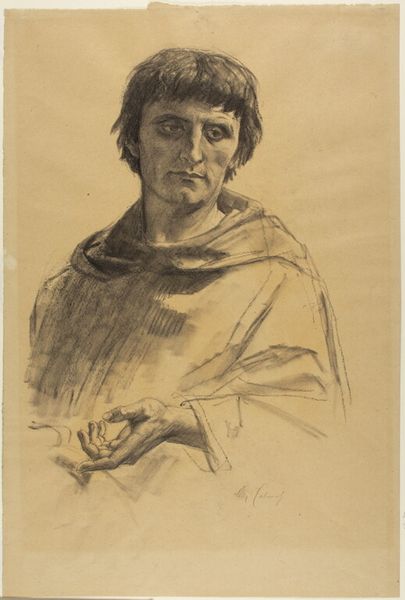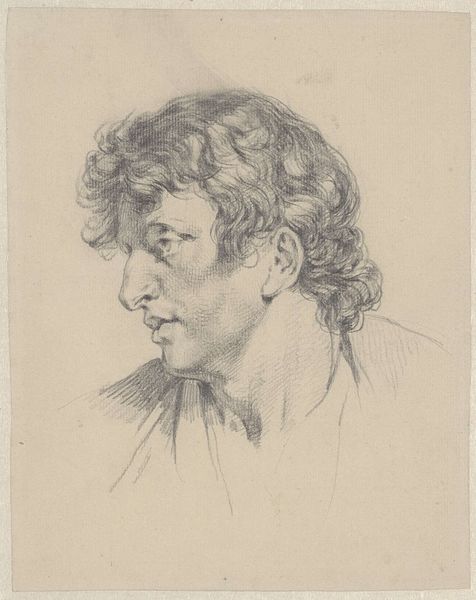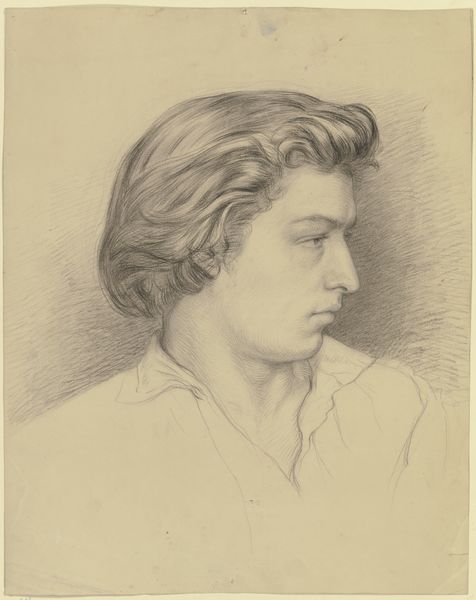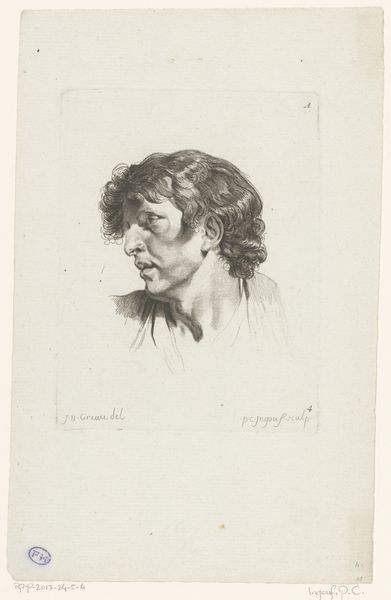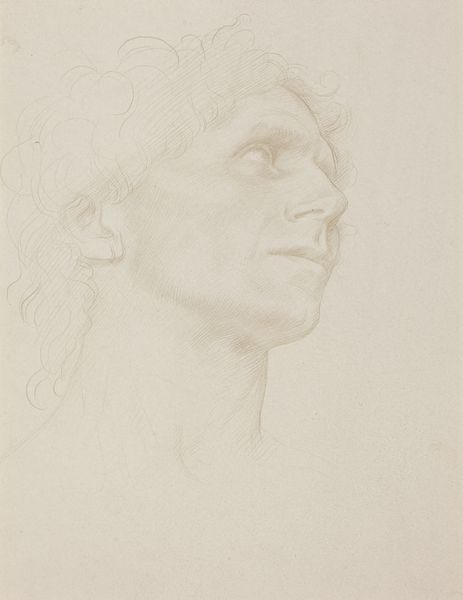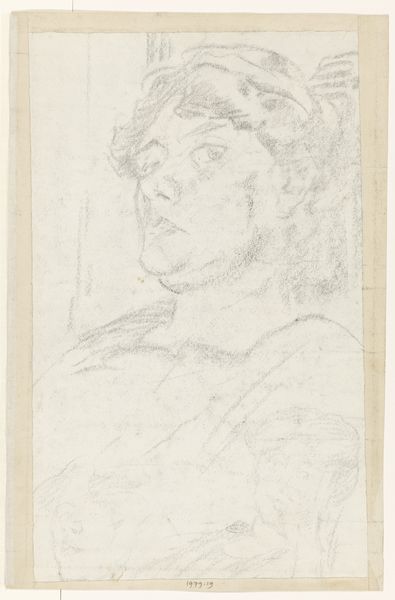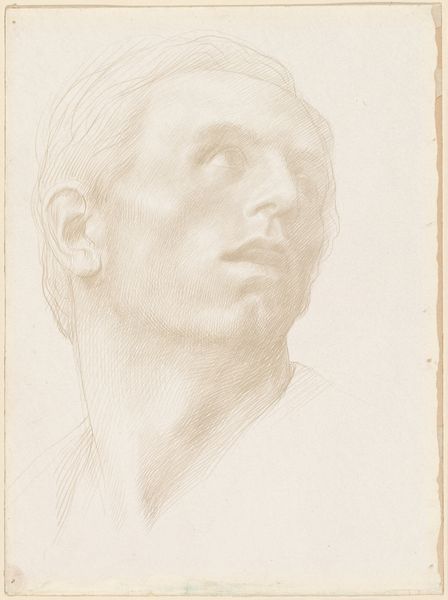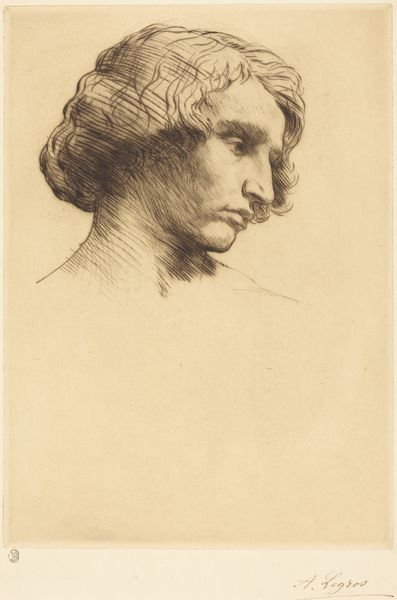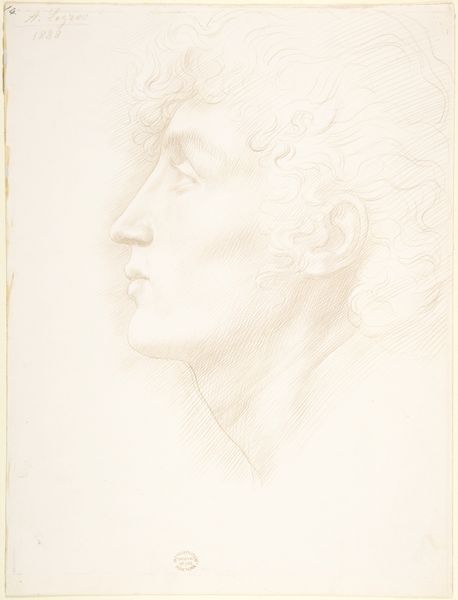
drawing, pencil
#
portrait
#
drawing
#
pencil drawing
#
pencil
#
portrait drawing
#
academic-art
Dimensions: overall (approximate): 43 x 32.7 cm (16 15/16 x 12 7/8 in.)
Copyright: National Gallery of Art: CC0 1.0
Curator: Alphonse Legros' pencil drawing, "Head of a Man," presents us with an intriguing, albeit undated, study. What strikes you about it initially? Editor: The gaze, certainly. He looks upwards and slightly away, giving a sense of aspiration mixed with a hint of melancholy. The shading is quite dramatic, particularly around his neck, which contributes to the intensity of the piece. Curator: Absolutely. Legros was known for his academic approach, often referencing classical ideals of beauty and form, while also addressing themes of social realism. Consider how his time, marked by class disparities and emerging social movements, could influence his portrayal of the male figure. Could this idealized depiction offer an implicit commentary on the state of manhood at the time? Editor: It's interesting you bring that up. While the subject’s features are quite defined, they possess an inherent ambiguity. We lack specific identifiers relating to the sitter's class or position. But let's consider Legros’ other works. He was quite active in printmaking and his work reflected his strong commitment to social justice. Was he striving for an aestheticized form of working-class representation, or perhaps critiquing the norms of conventional portraiture commissioned by the bourgeois? Curator: Precisely. And there’s the material to consider. Legros chose pencil—a humble, accessible medium. He was teaching at the Slade, so it might even have been intended as a demonstration piece for his students, encouraging them to value simplicity and essential forms. This contrasts with the grand oil portraits that solidified elite status. Editor: Indeed, the choice of medium lends itself to broader accessibility and encourages democratic appreciation for the arts. But is the artist, with this upward gaze, attempting to challenge hierarchical systems, inviting viewers from different social strata to seek inspiration? Curator: Perhaps, we can appreciate this striking work, open to multifaceted, critical readings about masculine identity during social upheaval. Editor: Agreed. Viewing through the lens of history makes it richer still.
Comments
No comments
Be the first to comment and join the conversation on the ultimate creative platform.
